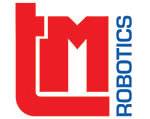FPV Racing League
Boston Magazine Profiles Rodney Brooks of Rethink
Reverse OCR
3D Reconstruction Firm Paracosm Has Closed $3.3 Million In Seed Funding
MegaBots: Live-Action Giant Robot Combat
Meet Lowe's New Robot Retail Workers
Grabit Inc. Demos Electrostatic Gripper
Watch That Windows Update: FTDI Drivers Are Killing Fake Chips
At Japan Robot Week, Mechanical Barista Treats Visitors to Coffee
iRobot Unveils Its First Multi-Robot Tablet Controller for First Responders, Defense Forces and Industrial Customers
NASA's Free Flying Robot Challenge
Deep Learning for Detecting Robotic Grasps
FPV Forest Quad Racing
Soft Robotics Toolkit
Robot Octopus Takes to the Sea
Records 1351 to 1365 of 1676
First | Previous | Next | Last
Featured Product

NVIDIA RTX PRO BLACKWELL DESKTOP GPUs
Robotics and Automation - Featured Company

